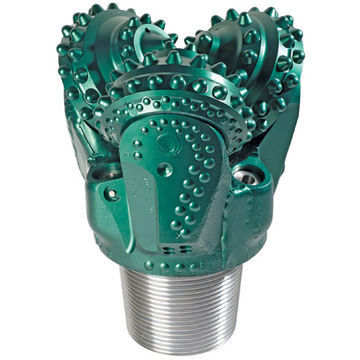Drilling Rigs
The drilling process is a very in-depth process. A well site must first be selected then all the legal documents obtained. Drilling operations can begin only after the site has been prepared, ground has been leveled, roads have been built, a derrick has been erected, and other equipment that comprises the drill rig has been put in place. Water is a vital component in the drilling process for mixing drilling mud (lubricant). Water can be hauled into the location by trucks or pumped from a nearby lake, pond, or water well. If no source is available, a new water well must be drilled before the drilling process can begin.

The most common drill rigs are of the rotary rig type (see image). Today's rotary drill rig consists of multiple engines that supply power, hoisting equipment that raises and lowers the drill string (drill pipe), and rotating equipment that turns the drill string and the drill bit. These engines also drive the circulating equipment that pumps liquids (mud) down the hole to lubricate the drill string and drill bit which are rotating in the hole. These liquids remove cuttings (loose bits of rock), and controls down hole pressure to prevent blowouts (unexpected pressure, which overcomes the weight of the drilling mud and explodes to the surface).

The conventional drill bit has three movable cones containing teeth made of tungsten carbide steel and sometimes industrial diamonds (see image). The rotating cones are the cutting heads. The downward force on the drill bit is the result of the weight of the overhead drill stem (steel pipe, pipe joints called collars) and drilling equipment on the derrick all of which can amount to thousands of pounds. Keep in mind that the entire pipe and bit assembly rotate together in the hole.
While the bit cuts the rock at the bottom of the hole, surface pumps are forcing drilling fluids down the hole through the inside of the drill pipe and out the bit. This fluid lubricates and removes cuttings. The fluid (with the cuttings) then flows out the center of the drill bit and is forced back up the outside of the drill pipe onto the surface of the ground where it is cleaned of debris and pumped back down the hole. This is an endless cycle that is maintained as long as the drill bit is turning in the hole. The drilling crew is under the supervision of the Driller. The person who works on a platform high in the derrick is called a Derrickman; he has the very dangerous job of handling the upper part of the drill stem as it is raised and lowered. Roughnecks are the workers on the derrick floor; their job is to add new pipe joints as the well depth increases. The entire crew and operation of the rig is under the supervision of the Tool Pusher. A typical drill rig will operate 24 hours per day, 7 days per week. It never shuts down for holidays.
